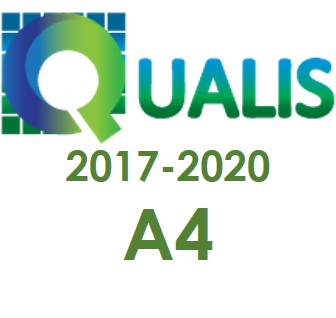On some null subject parameter-related properties in the L3 acquisition of brazilian portuguese (Sobre algumas propriedades relacionadas ao parâmetro do sujeito nulo na aquisição do português brasileiro como L3 )
DOI:
https://doi.org/10.22481/el.v7i2.1096Palavras-chave:
Null subject parameter, L3 acquisition, Brazilian PortugueseResumo
As language undergoing language change, Brazilian Portuguese presents characteristics of both pro-drop and non-pro drop systems. This study investigates the acquisition of two properties assumed to be related to the null subject parameter—clitic-climbing and the that-t effect—by adult learners of Brazilian Portuguese who speak a pro-drop language (Spanish) (n = 11) and a non pro-drop language (English) (n =19) as either L1 or L2. Results of an acceptability judgment task showed that the non-native speakers overall converged on the grammars of the Brazilian Portuguese control group (n =19), but there were transfer effects from Spanish for the L1-Spanish speaking learners and from both Spanish and English in the L1-English speaking learners. We discuss the implications of these findings for the role of transfer in L3 acquisition.
KEYWORDS: Null subject parameter. L3 acquisition. Brazilian Portuguese.
RESUMO
O português brasileiro, por estar em processo de mudanças, apresenta características tanto de sistemas pro-drop quanto de sistemas não pro-drop. Este estudo investiga a aquisição de duas propriedades que se assume que estão relacionadas ao parâmetro do sujeito nulo – a subida de clítico e o efeito that-t– por adultos aprendizes do português brasileiro, falantes de uma língua pro-drop (espanhol) (n = 11) e de uma língua não pro-drop (inglês) (n = 19), seja como L1 ou como L2. Os resultados de um teste de julgamento de aceitabilidade mostraram que, em geral, os falantes não nativos tenderam à/se aproximaram da gramática do grupo de controle formado por falantes de português brasileiro (n = 19). Porém, observaram-se efeitos de transferência do espanhol para os aprendizes falantes nativos de espanhol e transferências de ambas as línguas, espanhol e inglês, para os aprendizes falantes nativos de inglês. Discutimos as implicações destes resultados para o papel da transferência na aquisição de L3.
PALAVRAS-CHAVES: Parâmetro do sujeito nulo. Aquisição de L3. Português brasileiro.
Downloads
Referências
BARDEL, C.; FALK, Y. The role of the second language in third language acquisition: The case of Germanic syntax. Second Language Research, v. 23, p. 459-484, 2007.
BROWN, C. The role of the L1 grammar in the acquisition of the L2 segmental structure. Second Language Research, v. 14, p. 136-193, 1998.
CENOZ, J. The effect of linguistic distance, L2 status and age on crosslinguistic influence in third language acquisition. In: CENOZ, J.; HUFESEIN, B.; JESSNER, U. (Eds.). Crosslinguistic influence in third language acquisition: psycholinguistic perspectives. Clevedon: Multilingual Matters, 2001. p. 8-20.
CENOZ, J. The role of typology in the organization of the multilingual lexicon. In: CENOZ, J.; HUFESEIN, B.; JESSNER, U. (Eds.). The Multilingual Lexicon. Clevedon: Multilingual Matters, 2003. p. 103-116.
CHOMSKY, N. Lectures on Government and Binding. Dordrecht: Foris, 1981.
CYRINO, Sonia. On complex predicates in Brazilian Portuguese. LSRL 38: 38th Linguistic Symposium on Romance Languages. April 46, 2008, University of Illinois at Urbana Champaign.
DUARTE, M. E. A perda da ordem V(erbo) S(ujeito) em interrogativas-qu no português do Brasil. DELTA 8, n. Especial, p. 37-52, 1992.
_____. The loss of the “Avoid Pronoun Principle” in Brazilian Portuguese. In: KATO, M.; NEGRÃO, E. (Eds.). Brazilian Portuguese and the Null Subject Parameter. Frankfurt: Verveuert-Iberoamericana, 2000. p. 17-35.
DE OLIVEIRA, M. The pronominal subject in Italian and BrazilianPortuguese. In: KATO, M.; NEGRÃO, E. (eds.).Brazilian Portuguese and the Null Subject Parameter. Frankfurt:Verveuert-Iberoamericana, 2000. p. 37-53.
EPSTEIN, S.; FLYNN, S.; MARTOHARDJONO, G. Second language acquisition. Theoretical and experimental issues in contemporary research. Behavioral and Brain Sciences. v. 19, p. 677-758, 1996.
EUBANK, L. Negation in early German-English interlanguage: More valueless features in the L2 initial state. Second Language Research, v. 12, p. 73–106, 1996.
FERNÁNDEZ SORIANO, O. Strong pronouns in null subject languages and the Avoid Pronoun Principle. MIT Working Papers in Linguistics, v. 11, p. 228–39, 1989.
FLEGE, J. Interactions between the native and second language phonetic systems. In: BURMEISTER, P.; PISKE, T.; ROHDE, A. (eds.) An Integrated View of Language Development. Papers in Honor of Henning Wode. Trier: WissenschaftlicherVerlag Trier, 2002. p. 217- 244.
FLYNN, S.; VINNITSKAYA, I.; FOLEY, C. The cumulative enhancement model for language acquisition: comparing adults and children’s patterns of development in first, second and third language acquisition of relative clauses. International Journal of Multilingualism, v. 1, p. 3-16, 2004.
HÅKANSSON, G.; PIENEMAN, M.; SAYHELI, S. Transfer and typological proximity in the context of second language processing. Second Language Research, v. 18, p. 250–273, 2002.
JAEGGLI, O. Topics in Romance Syntax. Dordrecht: Foris, 1982.
JAEGGLI, O.; SAFIR, K. The Null Subject Parameter. Dordrecht: Foris, 1989.
JARVIS, S. Methodological rigor in the study of transfer: Identifying L1 influence in the interlanguage lexicon. Language Learning, v. 50, p. 245-309, 2000.
KATO, M. Strong and weak pronominals in the null subject parameter. Probus, v. 11, p. 1–38, 1999.
_____. The partial pro-drop nature and the restricted VS order in Brazilian Portuguese. In: KATO, M.; NEGRÃO, E. (eds.). Brazilian Portuguese and the Null Subject Parameter. Frankfurt: Verveuert-Iberoamericana, 2000. p. 223 -258.
KATO, M.; CYRINO, S.; CORRÊA, V. Brazilian Portuguese and the recovery of lost clitics through schooling. In: PIRES, A.; ROTHMAN, J. (eds.). Minimalist Inquiries into Child and Adult Language Acquisition: Case Studies Across Portuguese. Berlin/New York: Mouton De Gruyter, (in press). KAYNE, R. Null subjects and clitic climbing. In: JAEGGLI, O.; SAFIR, K. (eds.),The Null Subject Parameter. Dordrecht: Reidel, 1989. p. 239-261.
LEUNG, Y-K. I. Full Transfer vs. partial transfer in L2 and L3 acquisition. In: SLABAKOVA, R.; MONTRUL, S.; PRÉVOST, P. (eds.). Inquiries in Linguistic Development. In honor of Lydia White. Amsterdam: John Benjamins, 2006. p. 157-188.
LICERAS, J. Syntax and stylistics: more on the pro-drop parameter. In: PANKHURST, J.; SMITH, M. Sharwood; VAN BUREN, P. (eds.). Learnability and Second Languages. Dordrecht: Foris, 1988. p. 71-93.
LOZANO, C. The interpretation of null and overt pronouns in non-native Spanish. Durham Working Papers in Linguistics, v. 8, p. 53-66, 2002.
_____. Selective deficits at the syntax-discourse interface. Evidence from the CEDEL2 corpus. In: LEUNG, Y. K-I ; SNAPE, N.; SMITH, M. Sharwood (eds.). Representational Deficits in Second Language Acquisition. Amsterdam: John Benjamins, 2008.
MONTRUL, S.; DIAS, R.; SANTOS, H. Typology matters: Clitics and object expression in the L3 acquisition of Brazilian Portuguese. Special issue of Second Language Research on L3 acquisition. (under review).
MONTRUL, S.; DIAS, R.; THOMÉ-WILLIAMS, A. Subject expression in the non-native acquisition of Brazilian Portuguese. In: PIRES, A.; ROTHMAN, J. (eds.). Minimalist Inquiries into Child and Adult Language Acquisition: Case Studies across Portuguese. Berlin/New York: Mouton De Gruyter, (in press).
MONTRUL, S.; RODRÍGUEZ LOURO, C. Beyond the syntax of the Null Subject Parameter: A look at the discourse-pragmatic distribution of null and overt subjects by L2 learners of Spanish.” In: ESCOBAR, L.; TORRENS, V. (Eds.). The Acquisition of Syntax in Romance. Languages. Amsterdam: John Benjamins, 2006. p.400-418.
NEGRÃO, E.; VIOTTI, E. Brazilian Portuguese as a discourse-oriented language. In: KATO, M.; NEGRÃO, E. (Eds.). Brazilian Portuguese and the Null Subject Parameter. Frankfurt: Verveuert-Iberoamericana, 2000. p.105-125.
PAGOTTO, E. G. Clíticos, mudança e seleção natural. In: ROBERTS, I.; KATO, M. (eds.). Português brasileiro: Uma viagem diacrônica. Homenagem a Fernando Tarallo. Campinas: Editora da Unicamp, 1993.
PÉREZ-LEROUX, A. T.; GLASS, W. Null anaphora in Spanish second language acquisition: probabilistic versus generative approaches. Second Language Research, v. 15, p. 220-249, 1999.
PHINNEY, M. The pro-drop parameter in second language acquisition. In: ROEPER, T.; WILLIAMS, E. (eds.). Parameter Setting. Dordrecht: Reidel, 1987. p. 221-238.
PIENEMANN, M. Language Processing and Second Language Development. Processability Theory. Amsterdam: John Benjamins, 1998.
PIRES, A. Verb movement and clitics: Variation and change in Portuguese. In: BATLLORI, M.; HERNANZ, M. L.; PICALLO, C.; ROCA, F. (eds). Grammaticalization and Parametric Change. Oxford: Oxford University Press, 2005. p. 48-59.
RIZZI, L. Issues in Italian Syntax. Dordrecht: Foris, 1982.
ROSSI, M. A. L. Estudo diacrônico sobre as interrogativas do português do Brasil. In: ROBERTS, I.; KATO, M. A. (eds.). Português brasileiro:Uma viagem diacrônica. Homenagem a Fernando Tarallo. Campinas: Editora da Unicamp, 1993.
ROTHMAN, J.; CABRELLI, J. The L3 Initial State and the ‘L2 Status Factor’: Evidence from L3 French and L3 Italian. Second Language Research, (to appear).
SCHWARTZ, B.; SPROUSE, R. L2 cognitive states and the full transfer/full access hypothesis. Second Language Research, v. 12, p. 40-72, 1996.
SPROUSE, R.; VANCE, B. An explanation for the decline of null pronouns in certain Germanic and Romance languages. In: DeGRAFF,
M. (ed.). Language Creation and Language Change. Creolization, Diachrony, and Development. Cambridge, MA: The MIT Press, 1999. p. 257-284.
URIAGEREKA, J. Aspects of the Syntax of Clitic Placement in Western Romance. Linguistic Inquiry, v. 26, n.1, p. 79-123, 1995.
VAINNIKA, A.; YOUNG-SCHOLTEN, M. Gradual development of L2 phrase structure. Second Language Research, v. 12, p. 7–39, 1996.
WHITE, L. The pro-drop parameter in adult second language acquisition. Language Learning, v. 35, 47-62, 1985.
_____. Implications of parametric variation for adult second language acquisition: an investigation of the 'pro-drop' parameter. In: COOK, V. (ed.). Experimental approaches to second language acquisition. Oxford: Pergamon, 1986. p. 55-72.
_____. Universal Grammar and Second Language Acquisition. Amsterdam: John Benjamins, 1989.
XAVIER, G. R. Português brasileiro como segunda lingua: um estudo sobre o sujeito nulo. Tese (Doutorado em Linguística). Universidade Estadual de Campinas, 2006.
Downloads
Publicado
Como Citar
Edição
Seção
Licença
Autores que publicam em Estudos da Língua(gem) concordam com os seguintes termos:
Estudos da Língua(gem) mantém os direitos autorais das contribuições publicadas e disponibiliza seu conteúdo gratuitamente por meio do portal. Autores têm permissão e são estimulados a publicar e distribuir seu trabalho online em repositórios institucionais ou na sua página pessoal, com reconhecimento de autoria e créditos de publicação inicial nesta revista, indicando endereço online.












